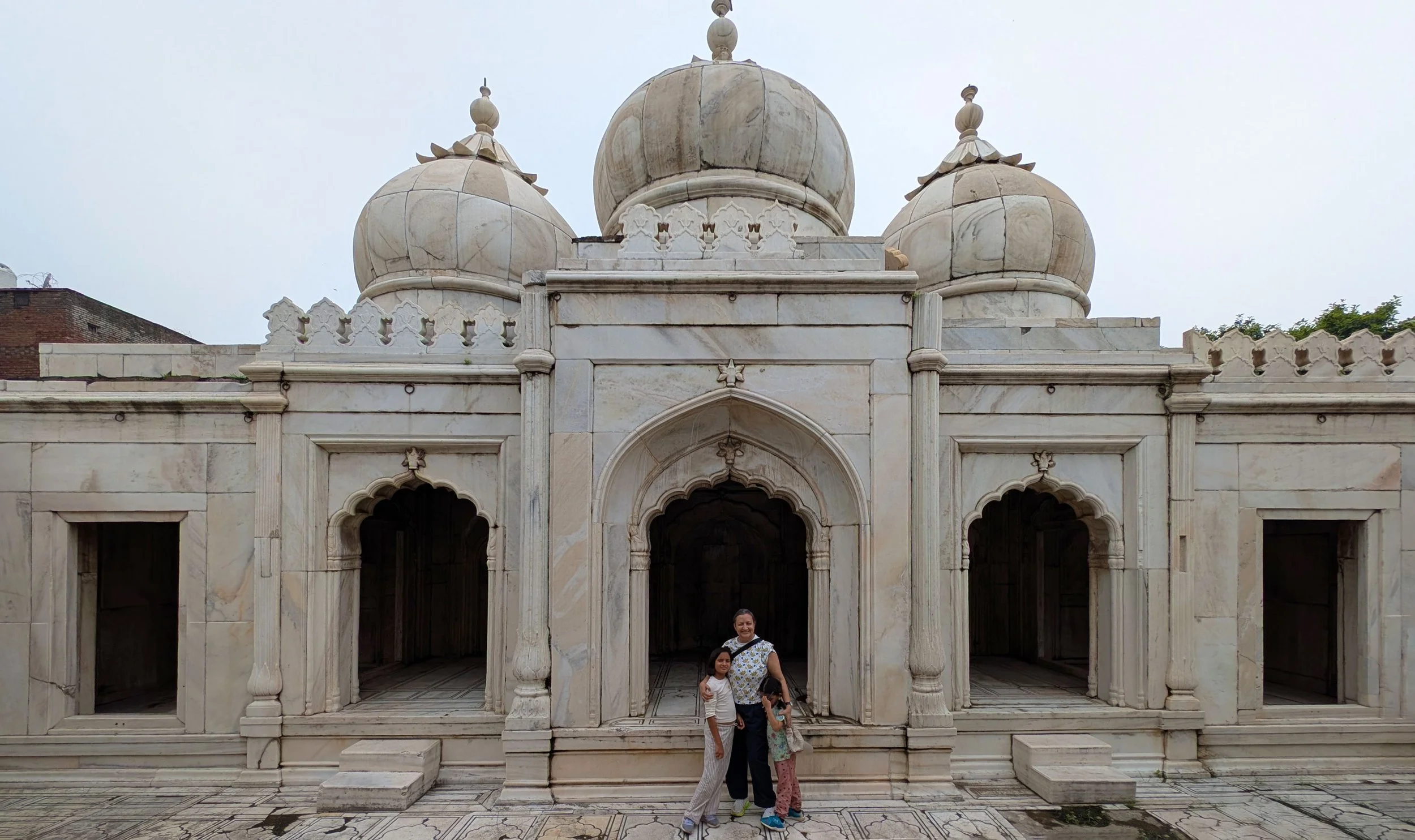Old Goa is a place where time either stands still or carries you elsewhere entirely. Walking through its avenues and ruins feels like a quiet teleportation into another world, one shaped by centuries of faith, belief, myths, hymns, power, and artistry. At moments it resembles stepping into a fragment of old European architecture, yet it remains distinctly Goan in spirit. Team Grounded experienced this magic firsthand on a heritage walk guided by the engaging and insightful Noah Fernandes. It was not just a walk but an immersion into stories carved in stone.
Our Lady of Rosary Church
We began at the Our Lady of Rosary Church, perched quietly on the Holy Hill. It’s simple laterite façade does not boast the grandeur of some of Old Goa’s other monuments, yet it holds deep significance. It is one of the oldest surviving churches in Goa, a silent witness to the early years of Portuguese conquest and settlement. Standing there, we felt the weight of beginnings, not just of a building, but of a whole era.
As architects, we were struck by how restraint in design can hold more power than ornament. In a world where façades often compete for attention, the Rosary’s simplicity commanded stillness and reverence.
Santa Monica Church
Whispers of Grandeur
From there, we walked to the Santa Monica Church, once Asia’s largest convent. The scale of the structure was overwhelming, yet within its aged walls lingered stories of faith, discipline, and devotion. Noah spoke of the nuns who lived cloistered lives here, shaping a religious culture that extended far beyond Goa. Even in its quiet decay, Santa Monica felt alive, as though its history still resonated through the silence.
Within the Convent of Santa Monica stands the Museum of Christian Art, a remarkable institution that preserves and celebrates the fusion of Indian craftsmanship with Christian themes. Established inside the Convent, the museum holds exquisite works of sculpture, paintings, textiles, and liturgical objects that reflect how local artisans reinterpreted European styles through their own traditions. What struck us most is how unique the museum feels, not only because it houses an extraordinary collection of Indo-Portuguese art, but because of the way it is integrated into the convent itself. MoCA is not just a repository of objects; it acts as a living bridge between worlds of art and devotion.
Through its carefully curated displays, it reveals how local Goan artisans reimagined Christian themes with Indian materials and techniques, creating a body of work that is both global and rooted in place. But beyond its collection, MoCA opens its doors to the community in meaningful ways - through workshops, lectures, heritage walks, and educational programs that invite the public to engage with history on a personal level. In doing so, it transforms art from something to be observed into something to be experienced, keeping the dialogue between past and present very much alive.
We felt the tension of a cultural transplant: European forms re-rooted in a tropical climate. Architecture absorbs the context it inhabits, and here, the marriage of style and environment was palpable.
St. Francis of Assisi
Where Cultures Met
Next was the St. Francis of Assisi Church, a place where the Portuguese Manueline style meets Goan artistry. The gilded altars, the intricate frescoes, and the detailing in every corner spoke of craftsmanship born of both European and Indian hands. It was here that the idea of Goa as a cultural crossroads truly struck us - a place where traditions didn’t just coexist but merged into something new and enduring.
Se Cathedral
Awe in Stone
Nothing quite prepares you for the sheer scale of the Se Cathedral. Its towering façade, its soaring ceilings, and the famed Golden Bell all commanded reverence. As Noah recounted its history, dedicated to St. Catherine and built over nearly a century, we could not help but feel humbled by its presence. It was more than architecture. It was a statement of faith and power carved in stone.
In contrast to human-scaled villages, this grandeur reflected colonial ambition. Today, oversized architecture often feels impersonal, but here scale carried the weight of history and conquest.
St. Cajetan Church -
A Grand Finale
Our walk concluded at the St. Cajetan Church, a Baroque gem inspired by Rome’s St. Peter’s Basilica. With its Corinthian columns, intricate altars, and harmonious proportions, it stood as a reminder that even in Goa, thousands of miles away from Europe, echoes of the Renaissance found a home. It was a fitting finale, graceful, elegant and full of presence.
This imitation does not mimic but transforms through material, climate, and context. Unlike replicas in global cities, here the architecture becomes distinctly Goan.
Reflections Beyond the Walk
Looking back, what made the walk so memorable was not only the grandeur of the churches but the way Noah wove history into lived experience. His storytelling connected stone to soul, helping us see Old Goa not as a collection of monuments, but as a living story of faith, power, art, and resilience.
For us at Grounded, it was a reminder that history isn’t just about the past. It is about how we carry it forward, how it shapes our spaces, our culture, and even the way we see ourselves. We ended our walk under the graceful arches of St. Cajetan’s with a quiet sense of gratitude for the heritage, for stories, and for the chance to walk through history together.
Noah Fernandes is a Conservation Architect, presently working as Assistant Professor at Goa College of Architecture. He has been conducting heritage walks of the Holy Hill in Old Goa since 2013. He has studied and documented the cultural landscape along the River Mandovi during his Masters in Architectural Conservation from the School of Planning and Architecture, New Delhi.
Text by V V Kusum Priya (@the.paper.city)
Photographs by Sanjeet Wahi and Arshita Mehta
































